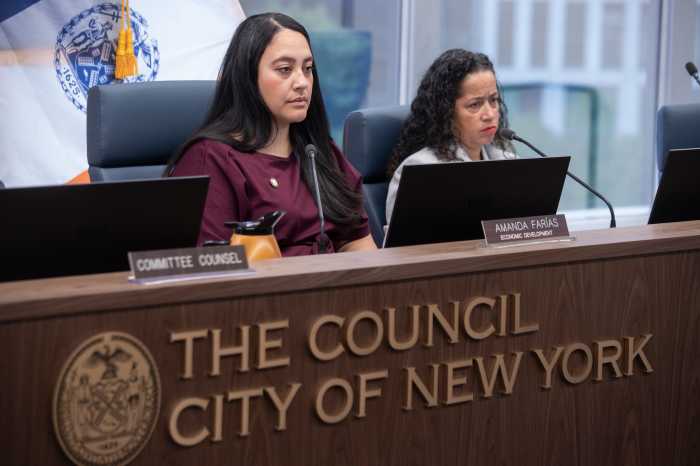New Yorkers need to get down and dirty when it comes to their trash.
About 68 percent of what New Yorkers throw out at home could be recycled or collected as organic waste, according to a new study released by the city’s Department of Sanitation.
City residents currently recycle about 52.4 percent of the paper and 44.6 percent of the metal, glass and plastic they use.
But the news isn’t all bad.
Sanitation officials said New Yorkers are generating less garbage at home than ever before. In 2017, the average household produced about 1,990 pounds of waste, before recyclables are sorted out. That number is smaller than the 2,000 pounds recorded in 2013 and the 2,280 pounds from 2005.
And cardboard recycling rates are especially impressive at 79 percent. Officials said this all-time-high rate translates into about 90 pounds per household
That could be chalked up, in part, to all those Amazon boxes arriving on city doorsteps every day.
New York City Sanitation Commissioner Kathryn Garcia said trash provides a window into the spending habits of New Yorkers, as well as changing trends in technology and packaging.
“What we see is the end of the process of what people decide to buy and the technology they use,” she said.
The detailed report, titled the “New York City Residential, School, and NYCHA Waste Characterization Study,” is an in-depth look into what New Yorkers are tossing out and what they are recycling, using data gleaned from actual samples of trash collected around the city.
“We see a lot of things moving in the right direction,” said Garcia.
The average household recycled 174 pounds of paper and cardboard and 144 pounds of metal, glass and plastic in 2017, according to the report, compared with 171.5 and 101 pounds respectively in 2013. But those same households also failed on average to recycle about 158 pounds of paper and cardboard and 179 pounds of metal, glass and plastic last year.
The city also expanded its plastics program several years ago to include rigid plastics such as yogurt cups and toys.
A fledgling organic waste collection program currently serves about 3.3 million people. It will expand to the rest of the city by the end of 2018 to better capture the food scraps, food-soiled paper and yard waste that goes into the trash. The report said the average family tosses about 650 pounds of organic waste in the garbage every year.
Garcia said textiles such as clothing still end up in the trash instead of being recycled or donated. Cheap, fast fashion is at least partially to blame.
“People are quickly flipping over their entire wardrobe,” she said. “We need to think through what we can do to drive that number in the other direction.”
A state law enacted in 2015 banned New Yorkers from dumping televisions, computers, printers and other electronic devices in the trash — instead they are recycled through several programs. Along with the weight and sizes of televisions, so-called e-waste from average households has declined. The number of discarded televisions dropped from 5.1 pounds in 2013 to 0.4 pounds in 2017.
“Even though it’s a small percentage [of trash] it’s important to get out of the landfill mainly because of what’s in it, like heavy metals,” said Samantha MacBride, director of research and operations at the Sanitation Department’s Bureau of Recycling and Sustainability. “You are talking about tens of thousands of pounds. That kind of decline is notable.”
Garcia said they found an “enormous” number of stuffed animals in the trash.
“People don’t like to have their children play with old ones,” she said. “I don’t know what we are going to do about that.”




































